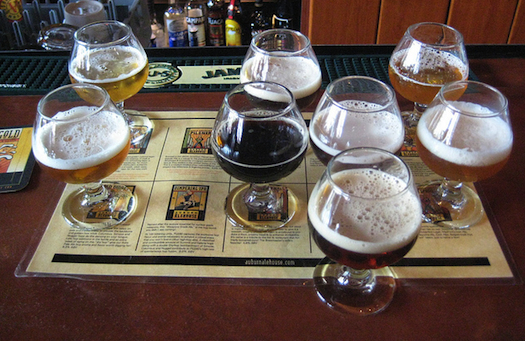

It’s a love story—so who cares if the lovers are a little unattractive? We can’t all be Snow Whites and Prince Charmings. I’m talking about the love affair between fruit flies and brewer’s yeast, which scientists so kindly described in a paper published last week in the journal Cell Reports.
In a series of experiments, biologists from several institutes in Belgium demonstrated that brewer’s yeast makes fruity, floral smells to attract fruit flies. In the wild, yeast might live on rotting fruit and entice flies to come to them there. Yeast and flies’ relationship benefits them both, the biologists found. Previous studies have found that eating yeast helps fruit fly larva develop faster and survive better. This new study found that fruit flies help spread yeast to new environments, like a bee spreading pollen. I guess getting munched is worth getting spread around on little fly feet?

By the way, those fruity, floral smells are some of the same ones that make beers fragrant and appealing. That’s right, you and fruit flies are attracted to some of the same smells. Not only that, but brewer’s yeast didn’t evolve those scents to make beer delicious. They evolved them for fruit flies. People just happened to sneak in to take advantage of that evolutionary relationship. Humanity: the creepy third wheel.
The Belgian study is a fun demonstration of the co-evolution of two species that even non-scientist humans frequently encounter. It’s also an interesting addition to decades of research into a strange topic. Because scientists have used fruit flies as lab animals for more than 100 years, science actually knows a lot about what smells fruit flies like. We know they like ethanol, which appears in rotting fruit, and acetic acid, the main smell-producing molecule in vinegar. We know they won’t like vinegar as much if it has geosmin in it, an earthy smell produced by bacteria that sometimes contaminate vinegar.

Identifying these fruit fly-appreciated scents has helped scientists figure out some basics in neuroscience, because scientists can set up studies to find what parts of the fruit fly brain react to different smells. That, in turn, sheds a little light into one way brains might work in general.
Fruit flies are really into smells, as it turns out. They use smells to find things in the world; that’s how they are inevitably able to find that banana you forgot about on top of the fridge. So researchers have even set up Pavlovian responses in fruit flies in response to smells. (The point of that study was to learn more about memory.)
Brewer’s yeasts have a gene called ATF1 that helps make “fruity metabolites” such as isoamyl acetate and ethyl acetate, the Belgian scientists found. The biologists used genetic engineering to create yeasts with no ATF1 gene and found fruit flies were much less likely to walk toward those mutant yeasts, compared to normal yeasts, and were less likely to spread them around. The fruit flies’ brains even reacted differently to those mutant yeasts.
I’ll toast to that.
